Abstract
The modified nucleoside, 7-(4,5-cis-dihydroxy-1-cyclopenten-3-yl-aminomethyl)-7-deazaguanosine, designated as Q, and its derivative, Q*, were found in tRNA's from various organisms, including several mammalian tissues, other animals such as starfish, lingula and hagfish, and wheat germ. Q isolated from rat liver tRNA was found to be identical with E. coli Q by mass spectrometry and thin-layer chromatography. Thus the rare modified nucleoside Q originally isolated from E. coli tRNA, is widely distributed in various organisms. Analysis of the mass spectrum of Q* suggested that it has a different side chain from Q.
Full text
PDF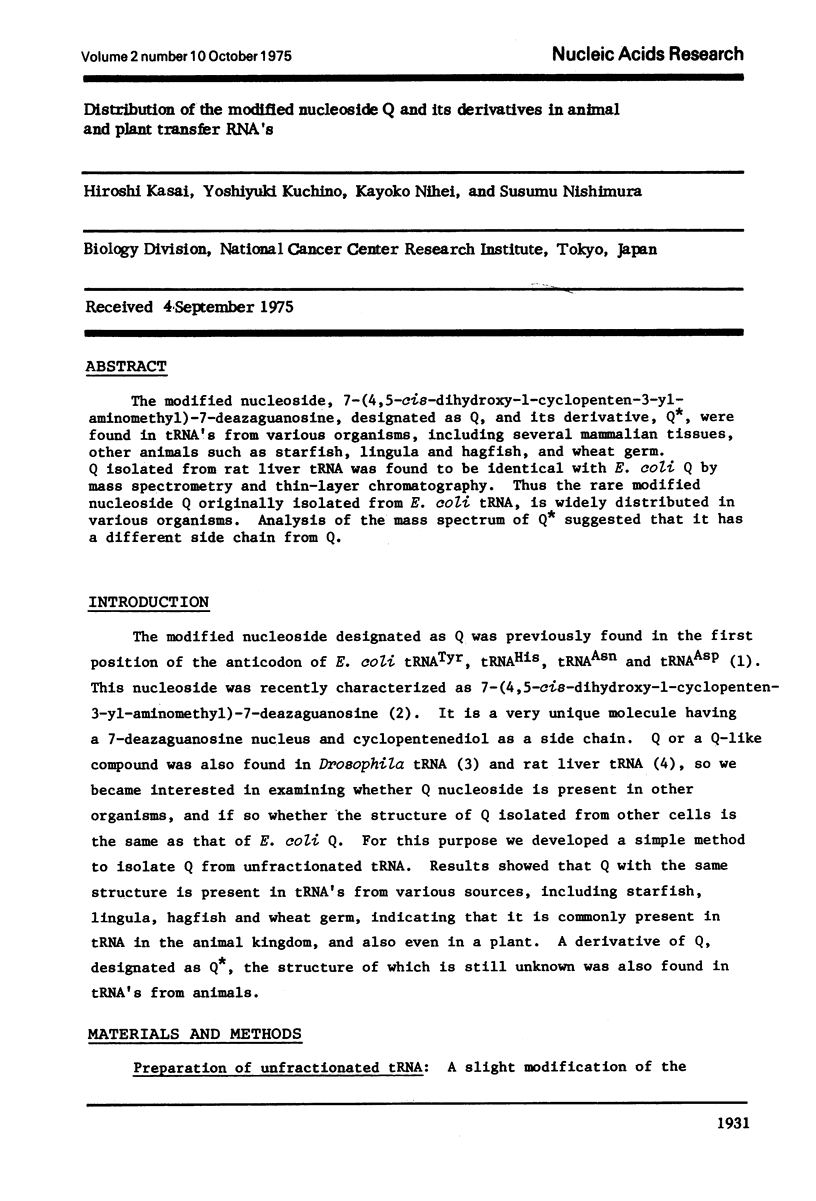
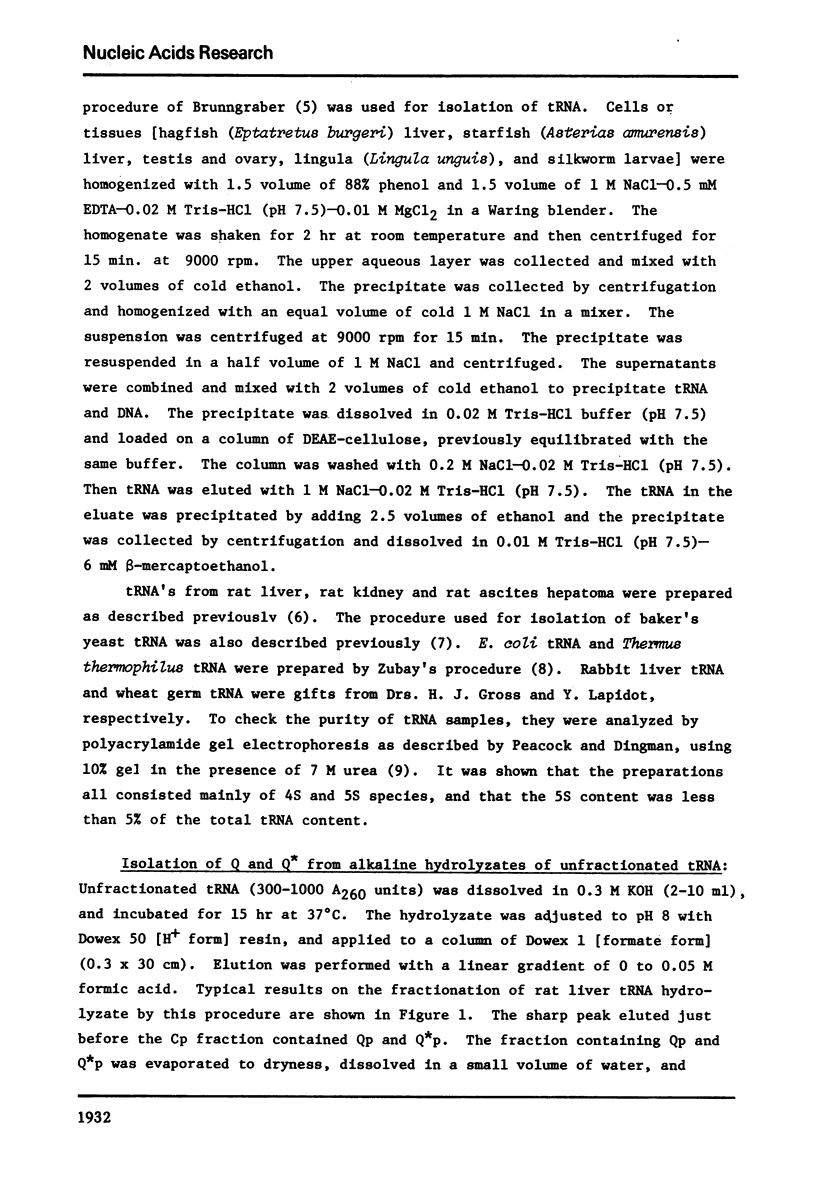
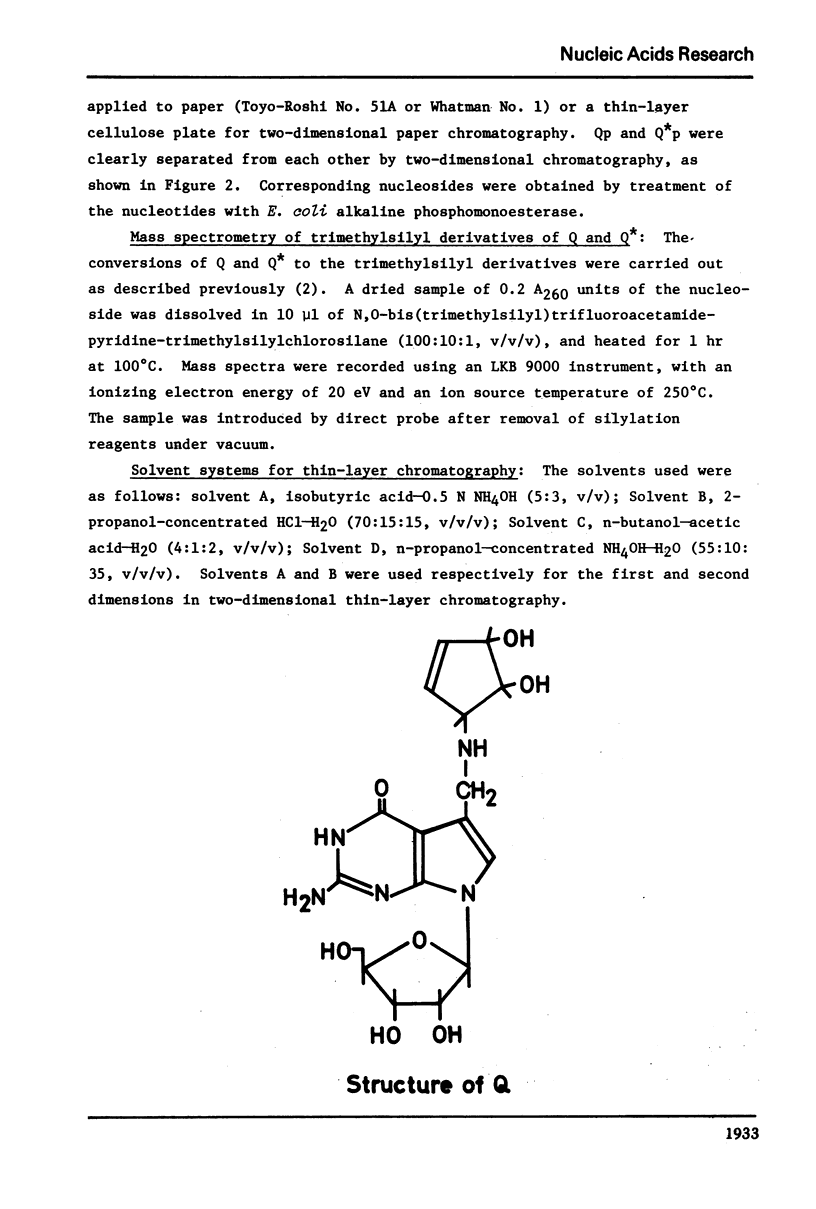
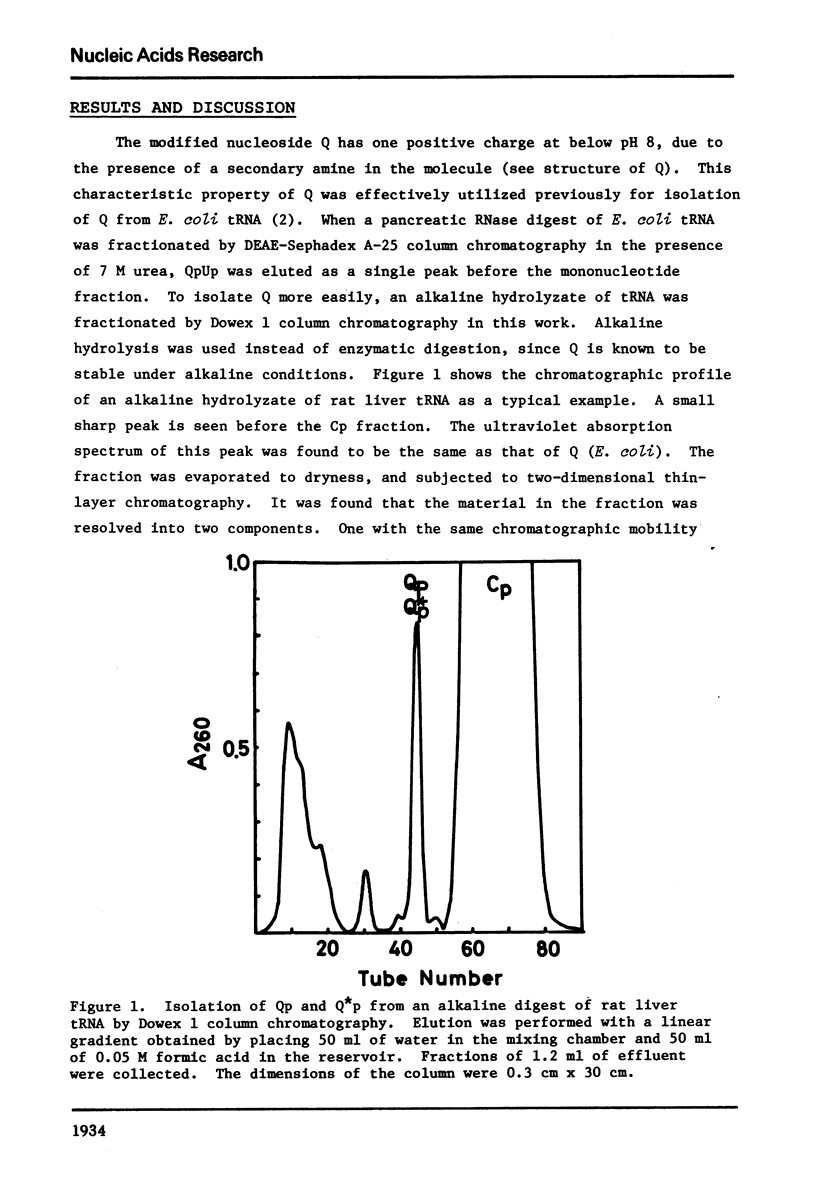
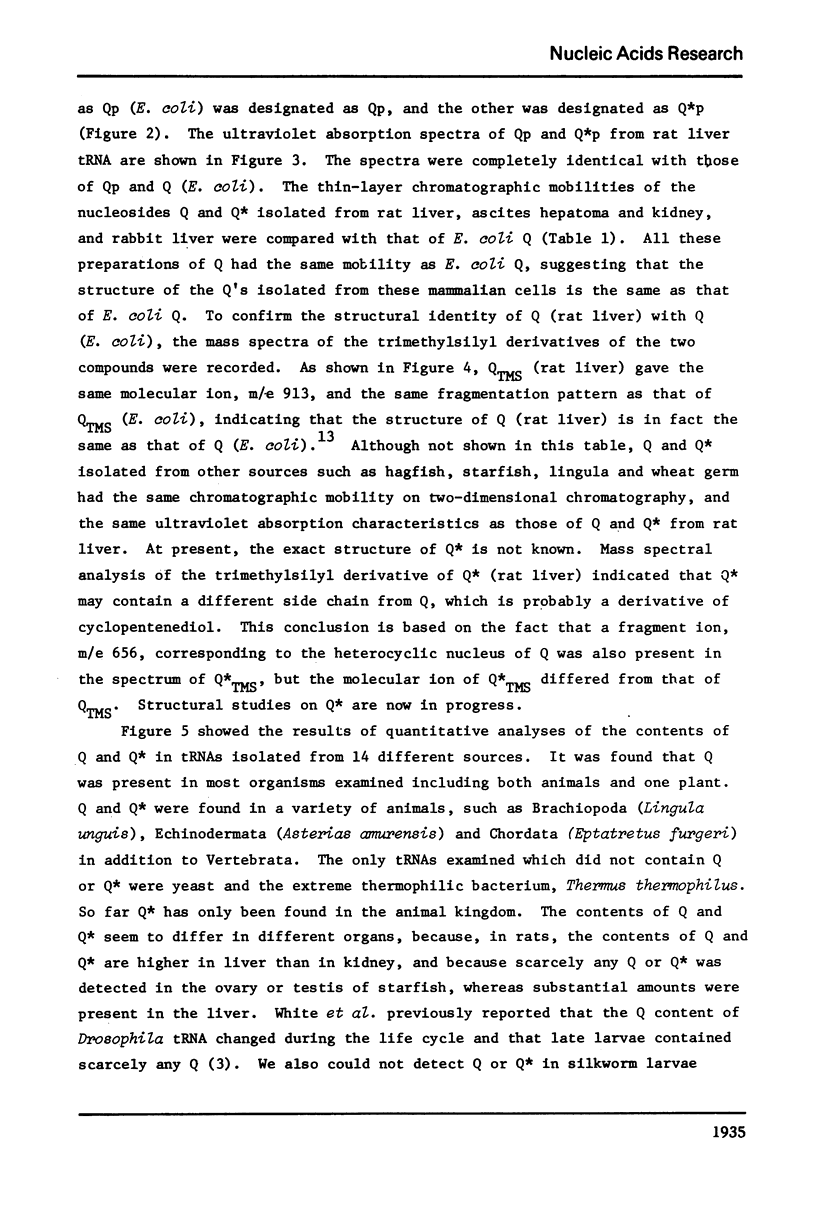
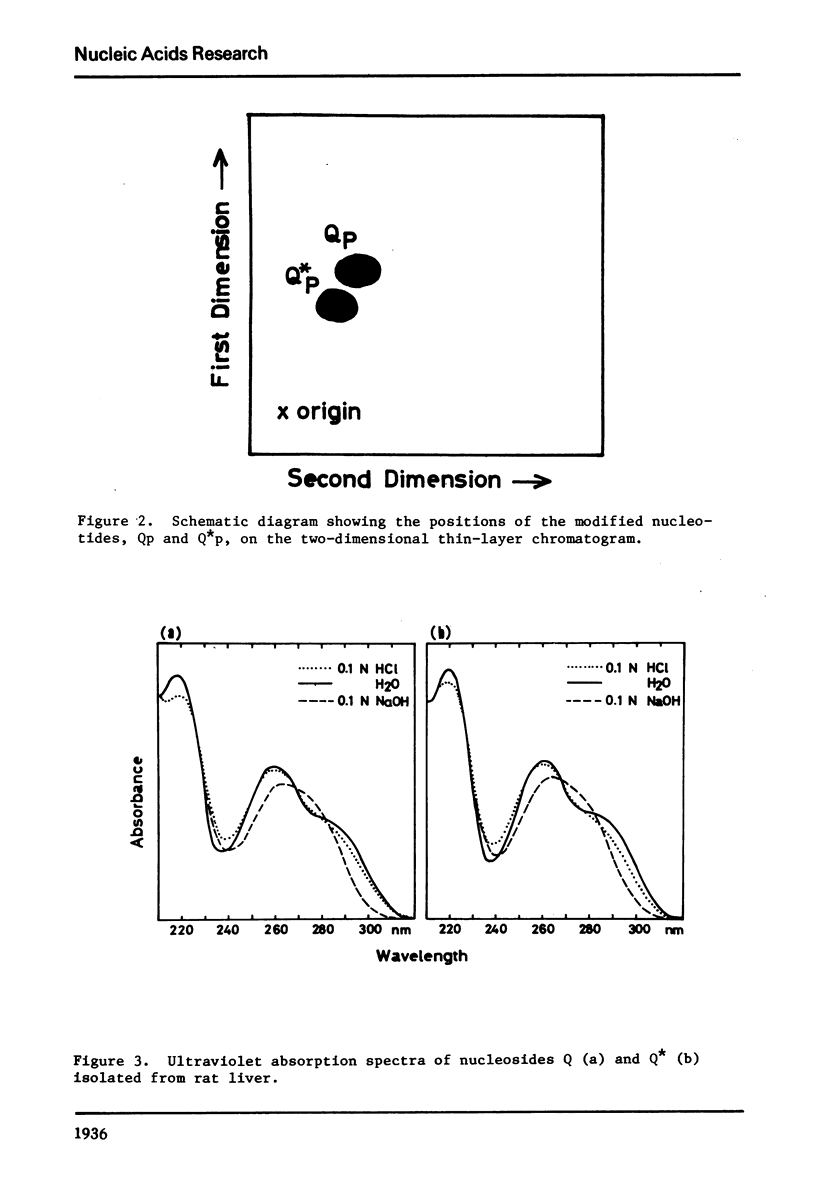
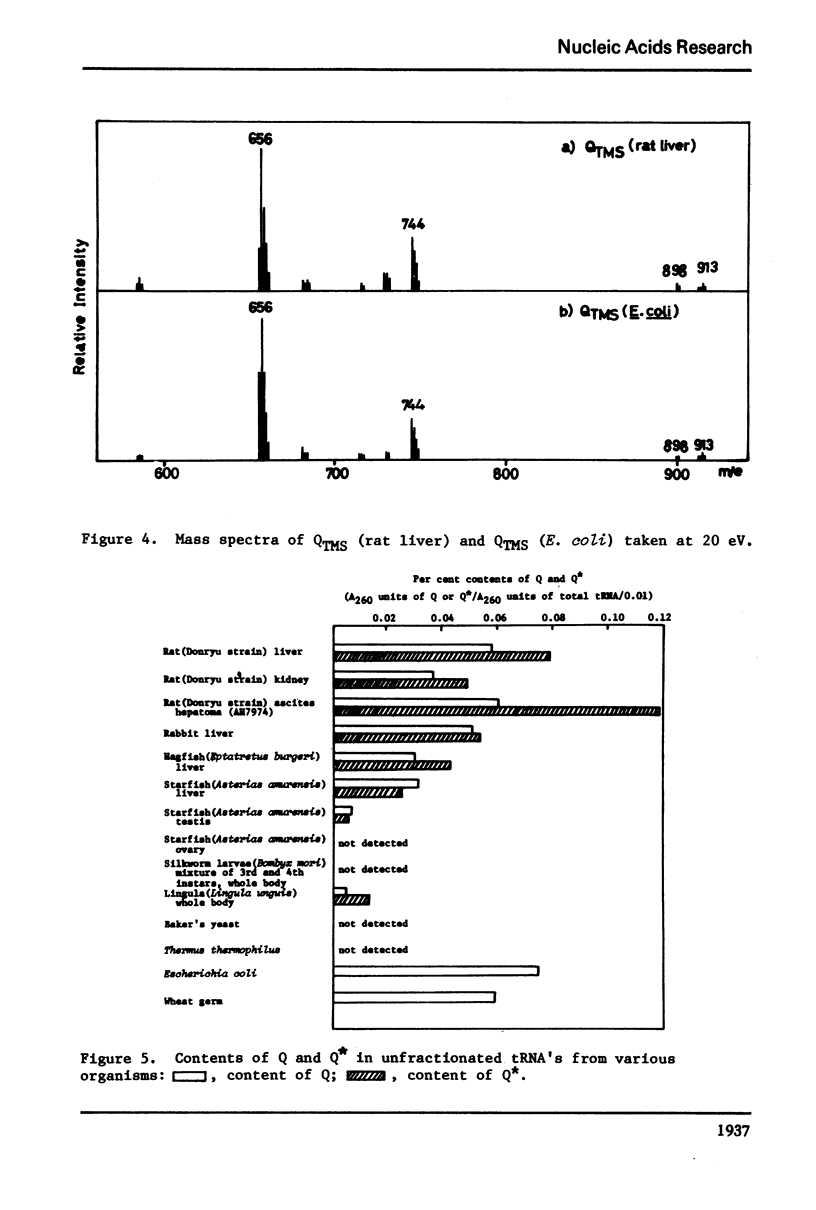
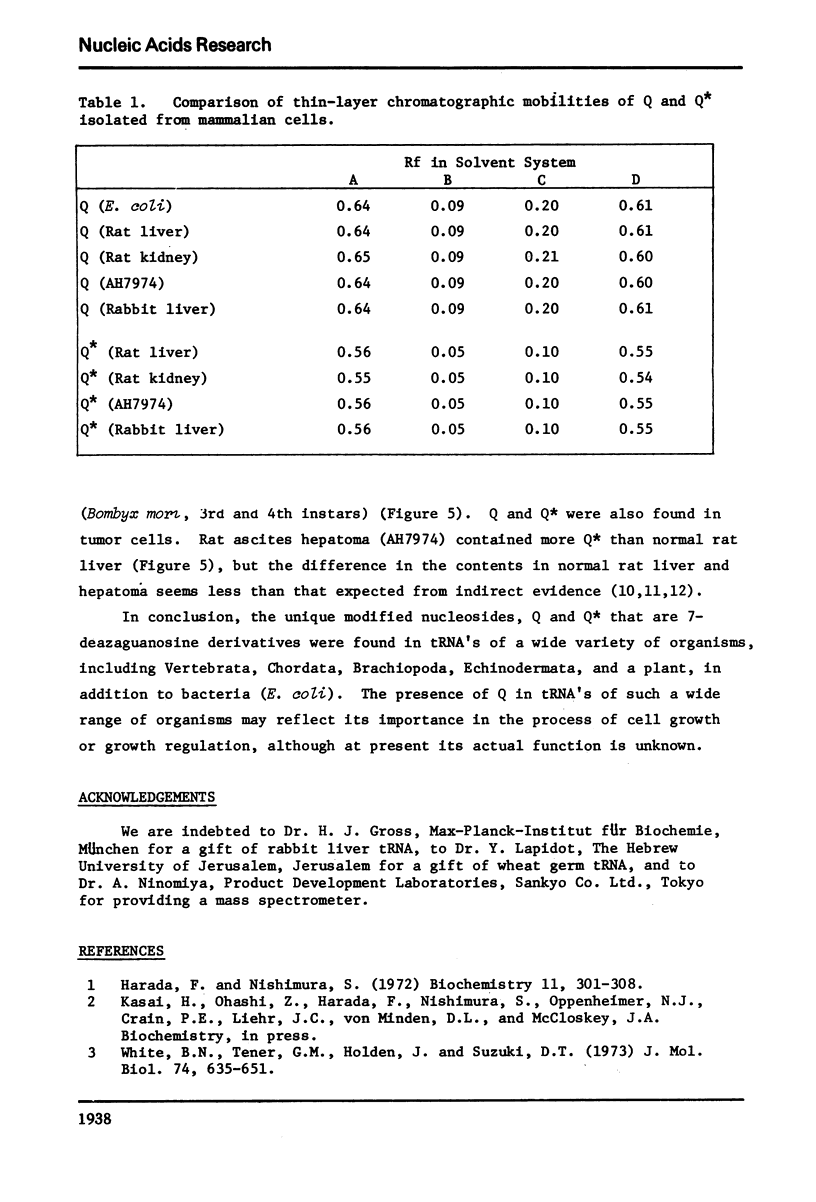
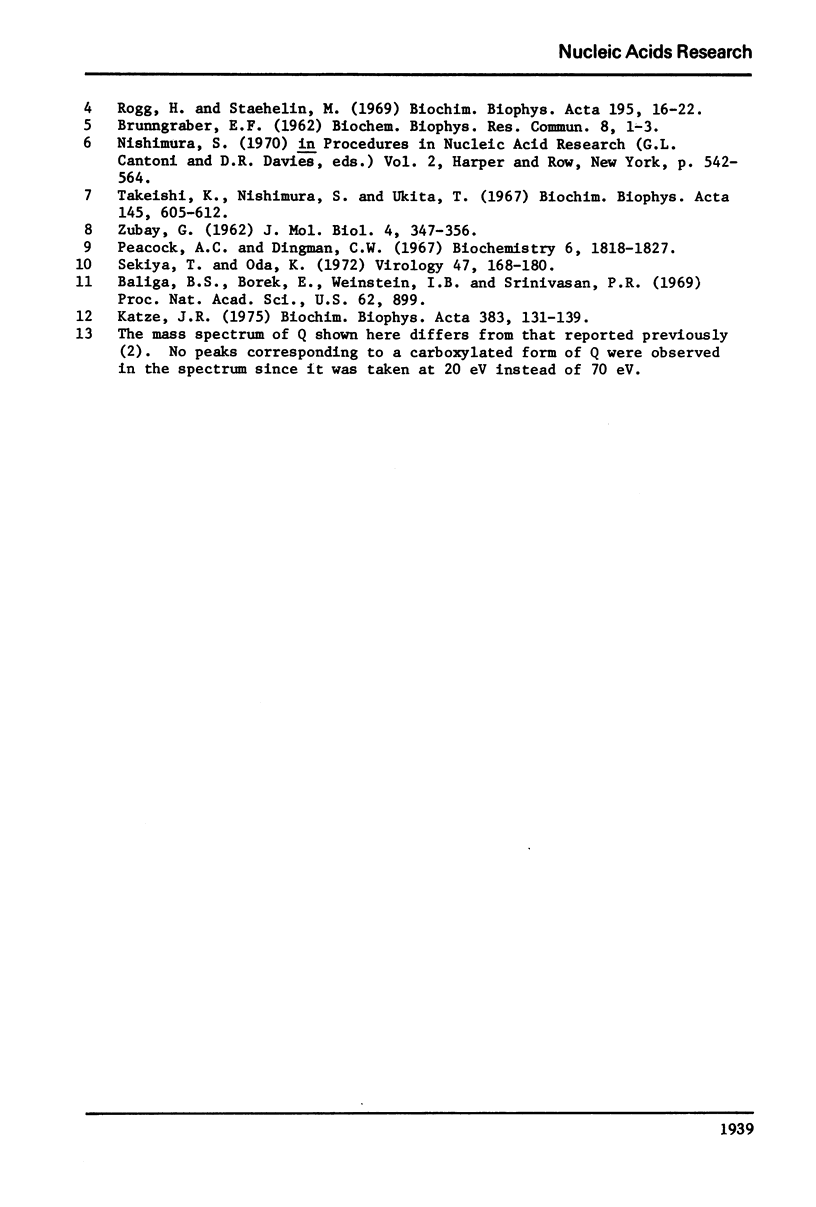
Selected References
These references are in PubMed. This may not be the complete list of references from this article.
- BRUNNGRABER E. F. A simplified procedure for the preparation of "soluble" RNA from rat liver. Biochem Biophys Res Commun. 1962 Jun 19;8:1–3. doi: 10.1016/0006-291x(62)90223-1. [DOI] [PubMed] [Google Scholar]
- Baliga B. S., Borek E., Weinstein I. B., Srinivasan P. R. Differences in the transfer RNA's of normal liver and Novikoff hepatoma. Proc Natl Acad Sci U S A. 1969 Mar;62(3):899–905. doi: 10.1073/pnas.62.3.899. [DOI] [PMC free article] [PubMed] [Google Scholar]
- Harada F., Nishimura S. Possible anticodon sequences of tRNA His , tRNA Asm , and tRNA Asp from Escherichia coli B. Universal presence of nucleoside Q in the first postion of the anticondons of these transfer ribonucleic acids. Biochemistry. 1972 Jan 18;11(2):301–308. doi: 10.1021/bi00752a024. [DOI] [PubMed] [Google Scholar]
- Katze J. R. Alterations in SVT2 cell transfer RNAs in response to cell density and serum type. Biochim Biophys Acta. 1975 Mar 10;383(2):131–139. doi: 10.1016/0005-2787(75)90254-3. [DOI] [PubMed] [Google Scholar]
- Peacock A. C., Dingman C. W. Resolution of multiple ribonucleic acid species by polyacrylamide gel electrophoresis. Biochemistry. 1967 Jun;6(6):1818–1827. doi: 10.1021/bi00858a033. [DOI] [PubMed] [Google Scholar]
- Rogg H., Staehelin M. Minor dinocleotides of rat-liver transfer RNA. Biochim Biophys Acta. 1969 Nov 19;195(1):16–22. doi: 10.1016/0005-2787(69)90598-x. [DOI] [PubMed] [Google Scholar]
- Sekiya T., Oda K. I. The altered patterns of transfer RNA in SV40-infected and transformed cells. Virology. 1972 Jan;47(1):168–180. doi: 10.1016/0042-6822(72)90250-4. [DOI] [PubMed] [Google Scholar]
- Takeishi K., Nishimura S., Ukita T. Purification of histidine-specific transfer RNA from yeast. Biochim Biophys Acta. 1967;145(3):605–612. doi: 10.1016/0005-2787(67)90119-0. [DOI] [PubMed] [Google Scholar]
- White B. N., Tener G. M. Activity of a transfer RNA modifying enzyme during the development of Drosophila and its relationship to the su(s) locus. J Mol Biol. 1973 Mar 15;74(4):635–651. doi: 10.1016/0022-2836(73)90054-5. [DOI] [PubMed] [Google Scholar]


